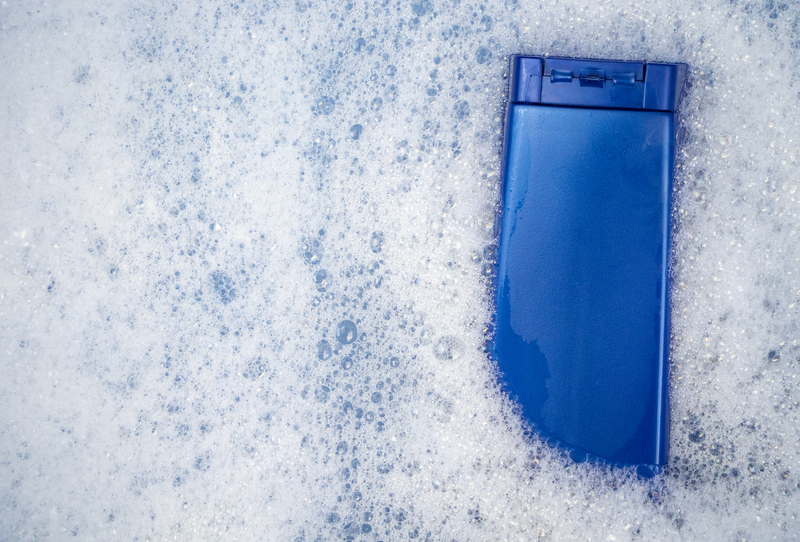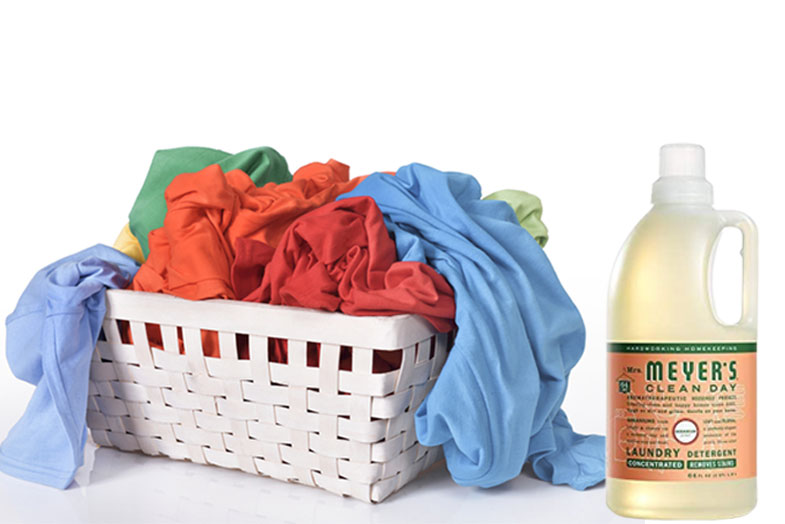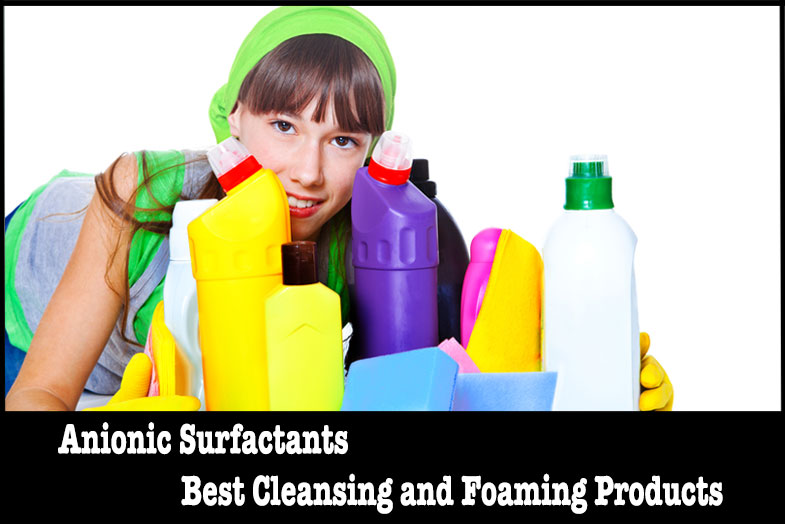Harsh cleaning products were available in the past. Today more gentle and smooth cleansers are available that works like magic to your clothes and garments.
The presence of anionic surfactants in cleansers and foaming products has made everything much simple and easier. Surfactant is mainly responsible for carrying the dust particles. When you cleanse your clothes, dirt easily gets dissolved in water and stays away from the fabric.
For this reason, anionic surfactant products are considered the best in the market. For a better understanding of these products, read this article to the end.
What Are Surfactants?
Surfactant is a primary and one of the most important ingredients in laundry detergent. Surfactants are also known as surface-active agents. Surfactants are responsible for reducing the surface tension of the liquid in which it is added.
When we look deep into the chemical structure of surfactant, we found that it contains a hydrophobic tail and a hydrophilic head.
To act as a foaming agent, the surface-active molecules have to be partly lipophilic and partly hydrophilic. If a surfactant is more lipophilic and less hydrophilic, it will act as a defoaming agent.
Surfactants are classified into four types. These are – nonionic, anionic, cationic, and amphoteric. These are classified on the basis of charge present on the hydrophilic head of the surfactant. This charge can be positive, negative, or neutral.
Anionic Surfactants

Anionic surfactants are commonly used in laundry detergents like foaming detergents and cleansers. This is because its head is negatively charged. The negative charge on anionic surfactant is beneficial in removing all the dirt and debris, thus suspending these particles.
The best thing about this type of surfactant is that it is able to attack quite a broad range of dirt. For this reason, it is commonly used in cleansers and foaming products. It is excellent at removing any dirt and oil.
How do they Work?
The negative charge on the head of an anionic molecule is not always present. This molecule needs to be ionized before it starts working. For this reason, it has to be added to the water. Once added to the water, a negative charge appears on the surface. These negative charges on the surfactant’s head get attracted by the positive charge of dirt and oil.
Once these negative and positive charges get binds, the dirt gets separated easily. This makes it easier to remove the dirt from a fabric effectively.
Anionic surfactants are therefore used in making laundry cleaning products. The foam produced by this type of surfactant is of a higher level than compared to that of other classes. Most of the cleaning and foaming products are made of anionic surfactants.
Anionic Surfactant Cleanser
Surfactants are of various types, but not all those types have the ability to act excellently in cleaning products. Anionic surfactants are the best in this regard.
Anionic surfactants include various compounds like phosphoric acid esters, alkylbenzene sulfonates, sulfonic acid salts, and many more.
Alkyl sarcosinates are anionic surfactants that are mostly used in detergents and personal care products. It is widely used in dishwashing detergents and many different cleaning products.
Formulated Cleaners

Surfactants are usually added to the formulated cleaners. Formulated cleaners are made to clean different types of soils, and so they are formulated with different chemicals. The main ingredients include builder, hydrotropes, surfactants, and carriers.
Commodity Cleaners
On the contrary, there are commodity cleaners that target only a specific type of soil. They are also made of a single chemical.
Talking about the formulated cleaners, they are made with surfactants. The type of surfactant added depends upon the type of dirt that is needed to be removed. In the case of laundry detergents, an anionic cleanser works best. Other than that, hypotropes are added to keep the surfactants and builder stable. Carrier can be a solvent or water.
Anionic Laundry Detergent

Surfactants are used in cleaning products to improve the efficiency of these products. Surfactants work by decreasing the surface tension, which in turn carries the dirt particles. Among the different types of surfactants, anionic surfactants are most commonly used. However, they are known for causing skin irritation.
Anionic surfactants are used in almost all cleaning products, from detergents to dishwashers and skincare products. Anionic surfactants used in most laundry detergents are derived from alcohols, which can be both natural and synthetic.
The type of surfactant used in a detergent determines whether it is harsh or gentle. A common type of anionic surfactant called sodium lauryl sulfate (SLS) is used in laundry detergents. It is found in topical products usually, which can be applied directly to the skin.
However, this ingredient forms a harsh cleaning product. A structurally similar compound called sodium laureth sulfate (SLES) is used in most products instead of SLS. SLES is less irritating to the skin, and it forms a milder cleanser.
Similarly, potassium cocoate is a milder anionic surfactant that can be used in cleaning products. It can be prepared from oils and fats.
The best cleansing product can be obtained by dividing the basic formulation into different categories.
- Surfactant: It is the primary and most important ingredient that forms a laundry detergent base. Its function is to remove dirt and soil.
- Builders: These are added to soften the hard ions of water. Several types of builders like Sodium carbonate, Sodium silicate, or Sodium tripolyphosphates can be used.
- Fillers: Fillers are important to maintain the composition of the detergent. If fillers are not added, detergent can become hard like a rock.
- Bleaching Agents: These compounds help remove stains and it brighten the clothes.
- Enzymes: They are responsible for breaking down the dirt and soil particles so that they can be removed easily by the detergent.
Other non-essential components include fragrances, preservatives, and foam regulators, etc.
Read More: What Makes Laundry Detergent Eco- Friendly?
Pros
- Anionic surfactants are really good at removing all the dirt from your clothes and keeping the clothes intact.
- Milder anionic surfactants are good to be used for all fabrics and for your skin as they do not cause any irritation.
- Surfactant products are suited to be used for a wide range of products. Using surfactant detergent, you can clean any type of fabric.
Cons
- As our clothes are washed with an anionic surfactant, detergent contains its traces. When we come in contact with the clothes, molecules of surfactant can get stuck in our skin as they bind to proteins. This leads to the denaturation of protein that disrupts their structures. Following this, the skin becomes irritable, and tightness occurs.
- Surfactants used in detergents are washed off to water bodies. At these places, anionic surfactants damage sea creatures, especially fish. The gills and mucus layer of fish are majorly affected.
- Anionic surfactants pose a serious threat to living organisms. It is also responsible for environmental pollution.
Anionic Surfactant Foaming Products
Foamy laundry detergents are not as effective as normal ones. However, car washing products work better if they are foamy. The foam makes the removal of all the particulates and clingy substances easier, giving off a clean surface.
The presence of charge on the head of a surfactant makes it better for foaming. This is the reason foaming products are manufactured using an anionic surfactant, which is a negatively charged molecule.
Cationic and nonionic surfactants are bad in terms of foaming. They are usually added to the cleaning products used for furniture or clothes.
Surfactants that are majorly used to produce foam are SLS and SLES. These are alkyl sulfates with fatty acid that is responsible for making foam. Structurally, they are both similar, which is why they can be used in place of each other. Since SLS is more of a skin irritant, SLES is preferred to be added to the products.
Apart from being irritable, both these compounds are considered completely safe to be used in laundry cleaning products and skincare products. They are far from being carcinogens.
Best foam can be achieved by mixing the primary surfactant such as SLES with a secondary surfactant like alkanolamide.
The myth that all foamy cleansers can be irritants is not true. Now that you know, which chemical is responsible for irritability, it is better to avoid it. A foamy cleaning product without SLS can be really beneficial.
Read More: Can Your Detergent Impact Your Acne and Skin?
Pros
- Foamy products made with anionic surfactants are excellent at kicking off the grime from the clothes.
- These products can go well with any type of fabric.
- These anionic foaming products provide you with deeply cleansed clothes every time you use them.
Cons
- More foam sometimes makes it harder to rinse it.
- Foamy products tend to be more expensive than normal cleaning products. They can be even less effective sometimes.
- The presence of sodium lauryl sulfate in foamy products can lead to damage to clothes and even to the skin of people.
In Conclusion
Surfactants can be harmful to both the health and the environment in case of long-term exposure. However, the limited use of a correct type of surfactant in various products can be really beneficial.
Due to its negative charge, the anionic surfactant is quite popular among cleaning products, whether it be detergents or personal care products.
Many anionic surfactants can be harsh to your clothes. Laundry detergents made with harsh anionic surfactants can cause irritation to your skin. This can be avoided by reviewing the label to look for milder anionic surfactants. For instance, SLES can be used instead of SLS as a surfactant in a cleanser. Former is a milder surfactant with lesser chances of skin irritation. If you have sensitive skin, you can completely avoid surfactants in your laundry detergent.

